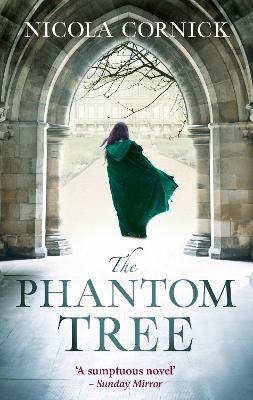Reviewed by pamela on
The Phantom Tree tells the concurrent stories of two friends, separated by time. Allison Bannister is a woman living in the present, ripped from her family and stranded in a time that isn’t hers. Mary Seymour is a woman lost from history who holds a secret she needs to communicate through time itself.
Tudor historical fiction is a dime a dozen these days. It’s always been popular, so the fact that Nicola Cornick tried to do something different with the formula is commendable. Her descriptions of the period are emotive and beautiful and gave a deep sense of what life would have been like for the ‘forgotten’ aristocracy of the Tudor period. It was less about the large political machinations and big personalities that punctuate what we know about the time, and instead put these elements in the background of a much more personal story. They gave a sense of time and place, rather than becoming the focus of what is, essentially, a very personal story.
It’s a shame then that the modern-day narrative didn’t have the same heart or depth as the historical narrative. Cornick’s love is obviously history, and that love showed through every word where the Tudor period was concerned. The modern elements simply felt flat and lifeless in comparison. We are introduced to Allison when she is already well established in our time. She has a job, an apartment, has already had a serious relationship (which is rekindled with absolutely no spark or romance) and so we never get to know the difficulty she must have had adjusting to modern life having just come from a time that is so far removed from our own as to be a different planet. Despite Allison being the protagonist, it was Mary who had all the characterisation and soul.
I think one of the reasons this may have been the case is that there is no internal logic or believability to the central premise of magic and time travel. At no point is it explained why it is possible. All the characters simply shrug and seem to say ‘that’s just the way it is’. There wasn’t enough in it that could suspend my disbelief at the fantasy elements. If it had been as simply as ‘time travel exists’ I probably could have been ok with that, but there are so many other elements jammed in there that didn’t heighten the narrative at all, that it did bear some kind of explanation. There are visions, precognition, telepathy and a weird telepathic romance that left me a little confused as to why it was necessary.
The ultimate resolution to The Phantom Tree was far too neat. All Allison’s modern day compatriots simply accept her story of time travelling without even a blink of disbelief. In only ten years we are meant to simply accept that she perfectly came to grips with modern life, learns to drive, studies abroad with a university despite having no documentation to even prove that she exists and lands a dream job with a start-up travel company that people would probably kill for, despite there being countries on the itinerary that hadn’t even been discovered at the time she was born. Even the answer to the plot’s great mystery somehow just seems to appear in her mind, despite the plot being set up as a tale of sleuthing through time.
There was a lot to commend The Phantom Tree as a work of historical fiction. But the fantasy elements and blind acceptance of the fantastical situations by the books characters were a little hard to swallow. Where the historical elements flowed naturally and worked as a believable narrative, the modern-day and fantasy elements felt somehow forced and made the book in to something that I don’t think it should ever have been.
Review also at I Blame Wizards
Reading updates
- Started reading
- 6 December, 2016: Finished reading
- 6 December, 2016: Reviewed
